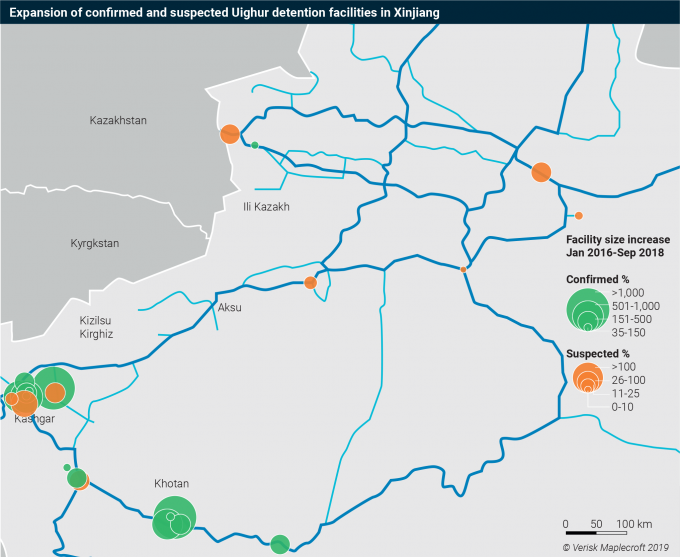China moves to shore up supply chains as production shift spreads
China is moving to shore up its supply chains as concerns grow over western withdrawals, ...

Food and hi-tech electronic supply chains have been warned they may be caught up in the growing use of forced labour in China’s western Xinjiang province.
The province is home to China’s Uyghur ethnic minority, which in recent years has been the subject of a government crackdown that has seen up to a million people detained in internment camps, amid reports of human rights violations, according to global risk analysis company Verisk Maplecroft.
“As more reports emerge about human rights abuses in China’s ...
Maersk Air Cargo sees volumes fall as it aims for 'margin in favour of revenue'
Keep our news independent, by supporting The Loadstar
Container spot rates diverge: to Europe still falling, but firmer to the US
Hapag-Lloyd won't take bookings if port congestion leaves cargo stranded
Ecommerce likely the front-runner in resurge of transpacific trade after deal
Airfreight players eye new routes as demand on the transpacific nosedives
China-US trade tariff pause could drive a rebound for transpacific rates
Service chaos from trade ban with India a problem for Pakistan shippers
Airfreight rates ex-China 'loss-making', but hopes of a trade deal stay high
Indian coastal freight attracts major carriers, but regional tension disrupts
Serious threat to jobs in US logistics as tariffs cause economic 'stagflation'
Volume surge and an early peak season? 'Don't celebrate too soon,' warning
APMM floats along on 'solid' Q1 profitability in Ocean, well prepared for choppy water
White House u-turns see freighters flying but keep logistics players on their toes
Carriers impose 'emergency operation' surcharges on Pakistan cargo
MSC in terminal switch as Nhava Sheva gets strong start to new fiscal year


Comment on this article